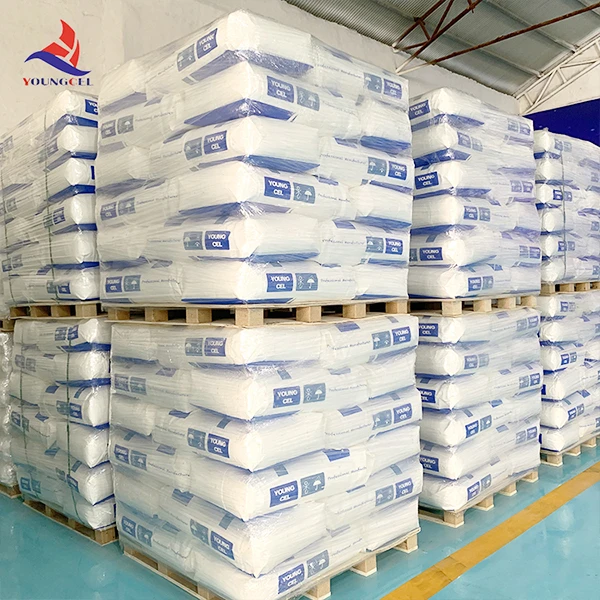The Versatility of RDP Powder A Deep Dive into Redispersible Polymer Technology
In the realm of modern construction materials and adhesives, redispersible polymer powders (RDP) have emerged as a transformative component, greatly enhancing performance characteristics in various applications. RDP is essentially a white, free-flowing powder that can be redispersed in water, forming a stable dispersion of polymer particles. Its primary function is to improve the mechanical and adhesive properties of mixtures, particularly in cement-based systems.
Understanding RDP Powder
RDP powders are specifically designed to be used with dry mortar products, including tile adhesives, render coatings, and self-leveling compounds. They are produced through the spray drying of polymer emulsions, which allows them to maintain their binding properties even after being dehydrated. When mixed with water, these powders redisperse to create a viscous, adhesive, and flexible film. The versatility of RDP is largely due to its chemical composition, typically comprising vinyl acetate, ethylene, or acrylic copolymers, which allow for various functional properties depending on the application.
Key Benefits of RDP Powder
1. Enhanced Adhesion and Strength One of the most significant advantages of using RDP is its ability to improve adhesion between materials. In applications such as tile adhesives, RDP significantly increases bond strength, making it suitable for both interior and exterior use under diverse environmental conditions.
2. Improved Flexibility RDP contributes to the flexibility of the final products, allowing materials to adapt to thermal movements without cracking. This property is particularly essential in applications exposed to fluctuating temperatures and moisture levels.
3. Water Resistance When properly incorporated, RDP can enhance the water resistance of mortars and coatings. This is crucial for applications in humid environments or areas exposed to water, such as bathrooms and kitchens.
4. Reduced Shrinkage The use of RDP in formulations can reduce shrinkage during curing. This characteristic helps maintain the integrity of structures and adheres to surfaces without developing cracks.
5. Improved Workability RDP powders improve the workability of mortar and plaster products. This allows for easier application and handling by construction workers, ultimately speeding up the construction process.
rdp powder redispersible polymer

Applications of RDP Powder
Due to its multitude of advantages, RDP powder has found itself at the forefront of numerous applications in the construction industry
- Tile Adhesives The incorporation of RDP in tile adhesives ensures superior bonding, flexibility, and water resistance, which are essential for long-lasting installations.
- Cementitious Repair Mortars In repair applications, RDP enhances the performance of repair mortars by offering better adhesion to old concrete surfaces, reducing the risk of delamination.
- Rendering Compounds For external render applications, RDP provides a durable finish that can withstand environmental stressors while maintaining aesthetic qualities.
- Skim Coats and Self-Leveling Compounds RDP aids in creating smooth, level surfaces by improving the flow and leveling properties of these mixes.
Environmental and Economic Considerations
The growing trend of sustainable construction practices has also influenced the utilization of RDP. Its ability to improve the performance of materials can lead to reduced usage of cement, thereby minimizing the carbon footprint associated with construction. Moreover, products containing RDP often require less maintenance and repair over their lifespan, which can lead to significant cost savings.
Conclusion
As the construction industry continues to evolve, the importance of high-performance materials becomes increasingly apparent. Redispersible polymer powder represents a vital innovation that bridges the gap between traditional materials and modern demands. With its exceptional properties and versatility, RDP proves to be an indispensable component in a wide range of applications, underscoring the potential of polymer technology in enhancing the performance, durability, and sustainability of construction materials. Whether you're a contractor, architect, or manufacturer, understanding the benefits of RDP can provide a competitive edge in today’s dynamic market.






